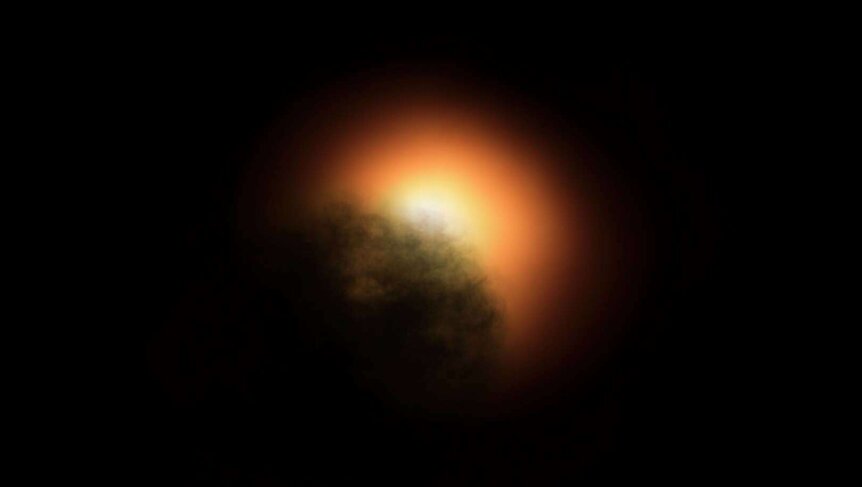Create a free profile to get unlimited access to exclusive videos, sweepstakes, and more!
Supernovas that happened in galaxies far, far away have left the most bizarre evidence on Earth

When stars go supernova, that usually happens too many millions of light years away to actually have any impact on us Earthlings…right?
Not all cosmic catastrophes happen in places that are so far away. We often think of phenomena like this as so distant, that by the time their light reaches Earth, our telescopes see them as they were long before even the most primitive humans emerged. Radiocarbon (carbon-14) found in tree rings is now thought to be revealing evidence of climate disruption caused by at least four supernovas. One of these events, which happened in the Vela constellation, was the death of a star only about 815 light years away.
Compare that with Betelgeuse, which is only 642.5 light years from us. Scary.
“It is the gamma and X-rays, which are very intense for such relatively close supernovas, that are of most concern,” researcher Robert Brakenridge, who led a study recently published in the International Journal of Astrobiology, told SYFY WIRE. “Upper atmosphere is fragile in this regard. Its composition affects our climate, and ozone that protects us from solar UV rays it would be destroyed, though temporarily, by this radiation. So not only are trace amounts of radiocarbon changed; other atmospheric effects are also expected.”
Radiocarbon is rare on Earth and doesn’t even come from here. The carbon isotope forms when our atmosphere, which is made mostly of oxygen and 14N, the stable isotope of nitrogen, is showered with cosmic rays that include gamma rays. Carbon-14 forms when gamma rays interact with the 14N. Some of that radiocarbon will manage to get through. Because trees breathe in carbon dioxide, some of the carbon in those CO2 molecules will end up being radiocarbon, but the amount is usually consistent from year to year.
What Brakenridge noticed was a spike in radiocarbon which showed up in tree rings for what appeared to be several years. That could possibly be an indicator of supernova effects on Earth, and there were traces believed to be from one frightfully recent supernova.
The Vela event was that supernova. It is thought to have happened when a star in the Vela constellation burst sometime between 11,300 years ago and 8,400 years ago. That is hardly the blink of an eye for the universe. Just the visible light from this phenomenon was brighter than the full moon, and it bombarded our planet with two types of radiation. Ionizing radiation—which includes the gamma and X-rays from the stellar explosion—brings in enough energy to knock out electrons and break molecular bonds when it passes through anything, and that includes air. UV radiation is non-ionizing radiation that only has enough energy to excite atoms and molecules.
“Our distant ancestors saw that supernova. It is reasonable to wonder if they experienced, and adapted to, the environmental changes,” Brakenridge said.
What happened post-supernova then could possibly tell us the effects of something like Betelgeuse exploding so close to Earth. Brakenridge, who had previously studied the effects of the Vela event through ice cores, believes that the ozone layer was severely (though temporarily) eaten away. With only a thin veil of ozone, Earth’s exposure to intense solar UV rays increased way past what any SPF could possibly protect against. There is still some irony in this. Even with all the UV suddenly flooding in, ozone depletion and the blockage of visible light (thought to have been caused by ionizing radiation from the supernova), made Earth cooler and darker.
“It is still likely that the environmental changes which occurred during the Vela supernova are still visible in paleoenvironmental records,” Brakenridge said. “It seems that the supernova probably caused short-lived atmospheric cooling. This event happened close enough to have left geological traces, such as evidence of an increased transfer of nitrogen, behind.”
Another hypothesized effect of the supernova is a surge in atmospheric nitrogen dioxide (NO2), an influx of nitrogen that made it possible for photosynthetic algae to bloom in places where nitrogen was previously scarce.
Some scientists argue that the source of the abnormal amounts of radiocarbon concentrated in tree rings could also be solar flares or coronal mass ejections, but there is no easy way to tell. There has been research that showed spikes in carbon-14 only come from gamma photons and not particles, and other research shows that there are not just spikes in the carbon isotope but beryllium-10 (10Be), another isotope from space. That could change the supernova theory. Brakenridge acknowledges that finding both of those isotopes at the same site could instead be an indicator of a monster solar flare that releases cosmic rays and charged particles.
“Some work suggests the effects of a solar superflare rather than supernova gamma photons,” he said. “Much more data is needed, and also better theoretical understanding and modeling of the predicted effects.”
In the meantime, you don’t need to build a doom shelter for Betelegeuse anytime soon. Stick to the masks and hand sanitizer.



























